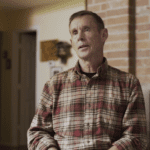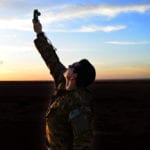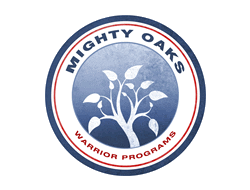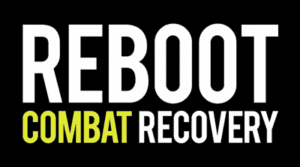As the diesel smoke from their big bus filled the air, I said goodbye to One Man’s Love, the band that is such an important part of our crusade ministry team. I watched as they pulled out onto the road headed for California via Phoenix; then I breathed a prayer for their safety and turned and walked back into the building.
One Man’s Love
I recall the first time I used One Man’s Love to do the music in a crusade. I was astounded by the way people responded to them.
Until that time, I’d never really considered the impact of music on an audience. I basically thought music was just something you did to fill time while people were gathering for a meeting. I knew music would entertain, or, if you were lucky, it might even minister to the folks. But I’d never stopped to weigh the actual influence.
Until that time, I’d never really considered the impact of music on an audience.
One Man’s Love, whose members range in age from 19 to 28, would change the direction of our crusades forever. They are the hottest band I have ever seen for reaching young people who aren’t familiar with church or religion. Since One Man’s Love has been with us, there has been a huge increase in the number of teens coming to our crusades. And the number of them responding to the invitations to accept Christ as Lord and Savior of their lives has doubled.
With the band in place and with my two associate evangelists, Reggie Dabbs and Phil Chapin, going full time, I thought all the members of the best possible ministry team were assembled, but God surprised me.
Randy Phillips
Six months earlier, the band returned from a youth camp raving about the talents of a guy they’d met named Randy Phillips. They couldn’t stop talking about Randy and the excellent job he does as a Human Video—the term Randy likes to use when referring to his work in mime.
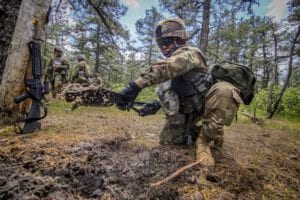
At the band’s insistence, I finally called Randy. I asked him to do a tour in California with us which would include public-school assemblies.
Randy said he had a concept he thought would be perfect for schools, but he would need help from the members of the band to make it work.
Six years ago he’d come up with the idea of doing a drama using chains to depict bondages to drugs, alcohol, pornography, and violence. Even though Randy had never done a school assembly or hadn’t had an opportunity to use the idea, he said he was ready. The band members were also excited about being involved in a public school assembly for the first time.
One Man’s Love stopped in Phoenix and picked up Randy then continued on to Northern California where they joined me.
With the band, a sound man, two associate speakers, two pilots, me, and now Randy, the entourage was getting so large I began to wonder how I would feed them all.
The Event
The time for the first assembly of the tour finally came, and I was introduced to the students.
My Story
In front of the students, I gave a condensed version of the story of my injury and miraculous recovery, then ended by saying, “I refuse to follow the trends of so many Vietnam vets and turn to drugs and alcohol to try to drown the past. I refuse to beat my wife. I refuse to spend the rest of my life in a prison, or commit suicide as so many vets have done. My decision was to break the chains of the socially unacceptable behavior of a Vietnam vet and enjoy my life and my family and wear real clothes.”
Phil Chapin’s Story
Then I introduced my associate, Phil Chapin, who told of his childhood ordeal. Phil was born to a 16-year-old heroin addict who started giving him marijuana when he was six to control his hyperactivity.
Phil told of the abuse he took at the hands of his father, who in fits of rage, would beat him into unconsciousness. The state of California took Phil and put him in a juvenile detention facility, then finally sent him to Oregon to live with an aunt. While attending a private school there, Phil met Lonnie Chapin who invited him to his house to meet a “real” family. The Chapin family took Phil in and eventually adopted him.
Today Phil goes with me into schools and explains to students that if they are abused, they don’t have to continue that cycle of abuse and become abusers themselves. He assures students they can break the chains of abuse.
Reggie Dabbs’ Story
When Phil finished speaking, I introduced my other associate, Reggie Dabbs.
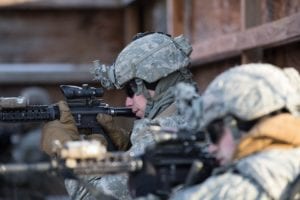
Reggie was born to a teenager who was paid $20 to have sex. He is black and can relate to students who share his scars as well as his color. Just one day away from being aborted, Reggie’s life was spared by a high school English teacher who convinced the girl to deliver the baby. When Reggie was born, his birth mother rejected him. But the teacher and her husband adopted Reggie and raised him in a caring, loving home.
Statistics say Reggie should be a loser; that he should have grown up to be violent; that he should be one of those who robs the local 7-Eleven for $22.10, goes to prison, and falls in love with a boy named Butch.
Why didn’t he? Because, as Reggie tells a quarter of a million students a year, he broke the chains that hold a man in bondage. As he was wrapping up his portion of the assembly, Reggie looked up into the bleachers. He spotted Randy who had slipped in and was sitting with the students.
Reggie said, “Hey, Kid!”
Randy pointed to himself and mouthed, “Who? Me?”
“Yeah, you. How come I’m down here sweatin’ and you’re sittin’ up there in a leather jacket? Come down here a minute.”
A Brutal Illustration
Wearing a Michael Jordan ball cap, a Michael Jordan T-shirt, jeans, and Air-Jordan shoes, youthful-looking, 28-year-old Randy fit the role of a typical high school student.
As he bounded up on stage, Reggie said, “I’m tellin’ you, kids, you don’t have to end up like your parents. Take this kid for instance. Say, maybe, his mom is a prostitute. Well, just because his mom is a prostitute doesn’t mean he has to prostitute himself. He can break the chain; he can be something different.”
As Reggie talked, the guys in the band, dressed all in black, with nylon stockings over their heads to distort their features, slipped on stage.
Reggie continued, “Or, just because his dad, maybe, is an alcoholic, doesn’t mean he has to be an alcoholic. The only way he can become an alcoholic is if he chooses to be one.”
Precisely on cue, to Randy’s horror, the band’s drummer, Dave Wampler, slapped a huge chain around Randy’s ankles, fastened it tightly, and slipped away.
Reggie moved off into the background as Wampler and the other band members returned with pieces of rubber hose. They began a relentless, realistic-looking attack on Randy. Every time they struck Randy with the rubber hoses, the loud popping noise caused the audience to wince.
His attackers forced Randy to snort “cocaine,” look at “pornography,” have “drugs” shot into his veins, etc. As each act was accomplished, they wrapped another huge chain around Randy’s body. Eventually, he was shackled from head to foot with those enormous chains.
The scene was brutal. In fact, the acting was so believable, a teacher told us later that the students sitting next to her asked permission to go help Randy.
Recovering from the Chains
Their job finished, the band members danced off the stage in triumph, leaving Randy lying limp on the floor.
In the stillness that followed I could hear students weeping for Randy. But I knew in reality they were weeping for themselves.
As he tried to stand, Randy fell again and again. Somewhere in the background, the strains of a song began to swell “…gonna break these chains and get back on my feet again.”
But try as he might, Randy couldn’t free himself. The agony on his face ripped at the hearts of the spectators.
We let him struggle for what seemed like an eternity, then Phil slipped over to him and took off one of his chains. Reggie released another; I undid one; then teachers joined in, and finally, the last chain was removed by the principle.
Many students were on their feet crying and clapping and cheering. Others were lying on the gym floor weeping uncontrollably.
School counselors were stunned to see the shell on some of their toughest students finally breaking. Kids who never dared shed the masks that concealed their deepest hurts were now expressing raw emotion.
We were overwhelmed to see public-school students touched so deeply.
On-Time
After our team visited with the kids one-on-one, we packed the props and headed for the van. When I got there, I noticed Phil wasn’t with us and went to find him.
I finally spotted him over to the side talking with a girl who appeared to be crying. Knowing something important was probably happening with her. I didn’t bother him and when on and got into the van.
When Phil came, he stepped up into the can and sat quietly for a moment before he opened his hand. In it was a sturdy chain about 8-feet long.
The girl had given it to him, explaining she’d intended to use it that day to hang herself.
She’d carefully made her plans; after school, she would go into the band hall, close the door, secure the chain somehow, and end it all.
I’d never in my life heard of anyone hanging himself with a chain. But it was obvious that this girl meant business.
We beat the clock this time, but other kids haven’t been so fortunate.
A Somber Task
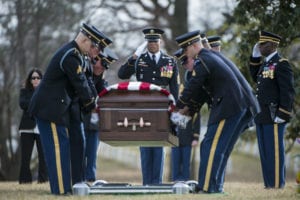
I was two hours late in Odessa. The assembly started at 8:30 a.m. The senior killed himself at 6:30.
When I stopped the car at a Sacramento school where I was scheduled to do an assembly, I wondered what was going on. Students were stumbling over each other as they ran to the backside of the school grounds near the tennis courts.
I was too late again. The boy hanged himself on the top of a chain-link fence.
I walked up to the door of a school in Boise, Idaho, just as paramedics whisked a girl, or her remains, out the door. Now, I never did learn whether she succeeded in her attempt at suicide.
I don’t take my work in schools lightly. I don’t believe God takes it lightly either. In fact, I believe that six years ago God gave Randy the idea of using chains to depict bondages and addictions, knowing full-well that it would not be used until recently.
Only God could possibly have known that I would ask Randy to do a tour with me which included a school where a little girl planned to hang herself with a chain.
Today there is a chain in my office that won’t let me forget the reason I speak in schools.
Schools are the only places in America where kids have to gather every day, Monday-through-Friday for nine months out of the year. Someone has to be there to help them understand.
They can break the chains of bondage to futures they really don’t want.

